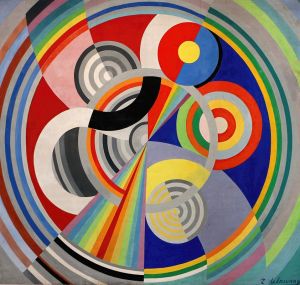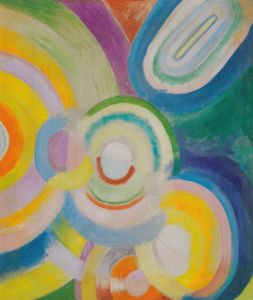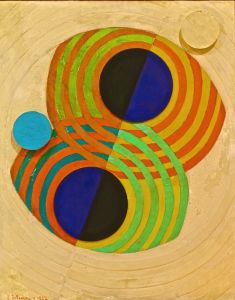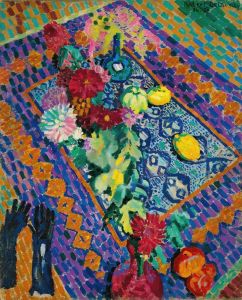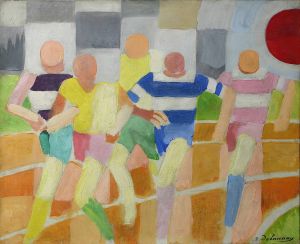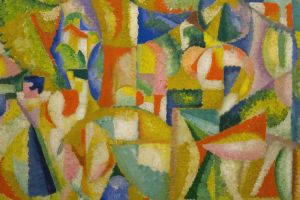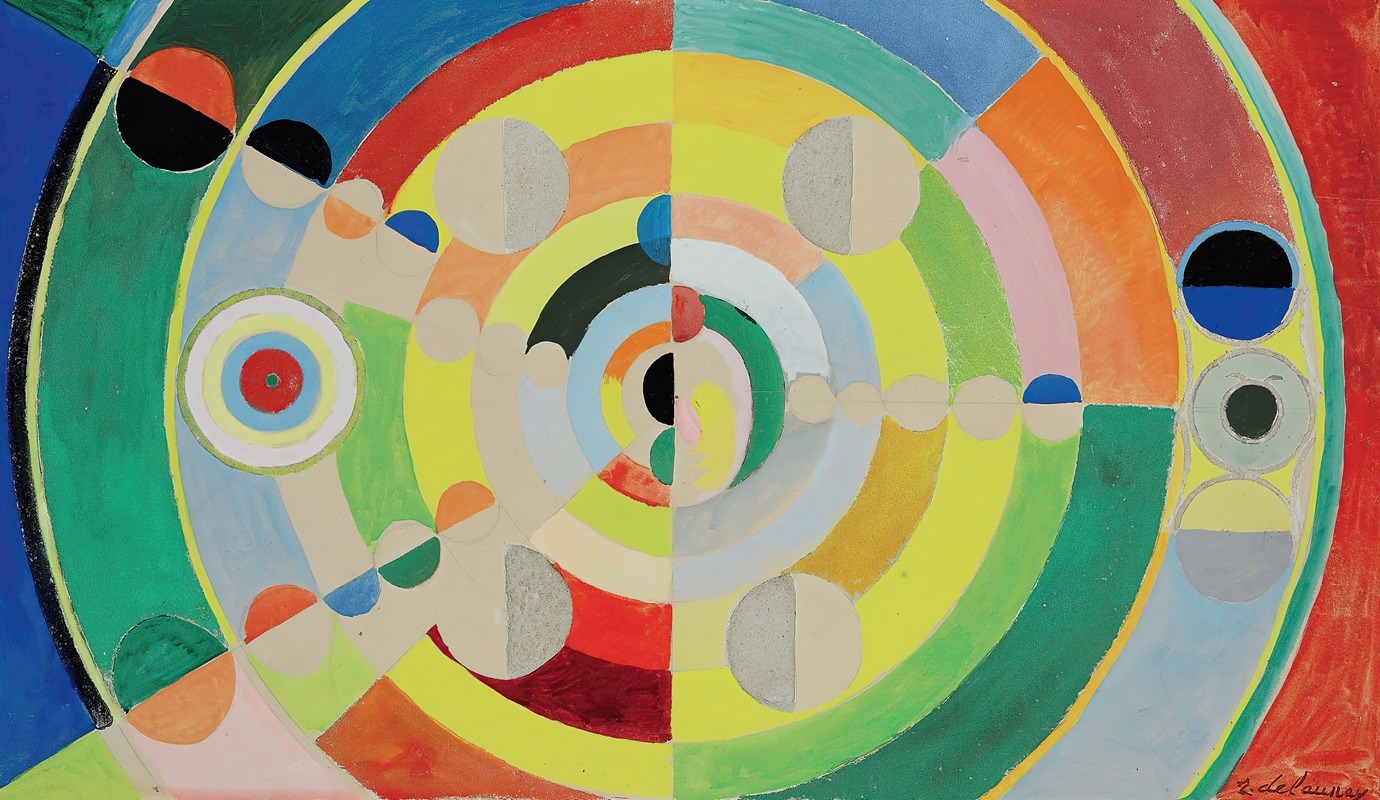
Disc-Relief
A hand-painted replica of Robert Delaunay’s masterpiece Disc-Relief, meticulously crafted by professional artists to capture the true essence of the original. Each piece is created with museum-quality canvas and rare mineral pigments, carefully painted by experienced artists with delicate brushstrokes and rich, layered colors to perfectly recreate the texture of the original artwork. Unlike machine-printed reproductions, this hand-painted version brings the painting to life, infused with the artist’s emotions and skill in every stroke. Whether for personal collection or home decoration, it instantly elevates the artistic atmosphere of any space.
Robert Delaunay was a prominent French artist known for his contributions to the Orphism art movement, which is characterized by its use of strong colors and geometric shapes. One of his notable works is "Disc-Relief," a piece that exemplifies his exploration of color and form.
"Disc-Relief" is a part of Delaunay's series of works that focus on circular forms and the interplay of colors. This series is significant in Delaunay's oeuvre as it marks a departure from representational art towards abstraction, emphasizing the dynamic relationship between color and shape. The piece is characterized by its use of concentric circles and vibrant hues, creating a sense of movement and rhythm. This approach aligns with the principles of Orphism, which sought to convey musical qualities through visual art.
Delaunay's interest in circular forms can be traced back to his fascination with the Eiffel Tower and the modern cityscape, which he often depicted in his earlier works. However, in "Disc-Relief," he moves away from these representational elements to focus purely on the abstract qualities of color and form. The circular motif in "Disc-Relief" can be seen as a symbol of infinity and unity, reflecting Delaunay's belief in the harmonious relationship between colors.
The use of relief in "Disc-Relief" adds a three-dimensional aspect to the work, enhancing its dynamic quality. This technique involves creating a raised surface on the canvas, allowing the colors to interact with light in unique ways. The relief aspect of the piece invites viewers to engage with it not just visually, but also spatially, as the play of light and shadow adds depth to the composition.
Delaunay's work during this period was influenced by contemporary developments in science and technology, particularly the study of color theory and the perception of light. His exploration of these themes in "Disc-Relief" demonstrates his commitment to pushing the boundaries of traditional painting techniques and his desire to create a new visual language that could express the complexities of modern life.
"Disc-Relief" is an important work within the context of early 20th-century art, as it represents a shift towards abstraction and the exploration of pure color and form. Delaunay's innovative use of color and his emphasis on the sensory experience of art had a lasting impact on subsequent generations of artists, influencing movements such as Abstract Expressionism and Color Field painting.
In summary, "Disc-Relief" by Robert Delaunay is a significant work that captures the essence of Orphism through its use of vibrant colors and geometric forms. The piece reflects Delaunay's interest in the dynamic interplay of color and light, as well as his commitment to exploring new artistic possibilities. Through "Disc-Relief," Delaunay contributed to the evolution of abstract art, leaving a lasting legacy on the art world.





